 New Year is a time when we vow to make a fresh start. And often that includes taking better care of ourselves. But how about taking better care of your car? Here are five resolutions from DCH Audi of Oxnard to consider: New Year is a time when we vow to make a fresh start. And often that includes taking better care of ourselves. But how about taking better care of your car? Here are five resolutions from DCH Audi of Oxnard to consider:
1. Wash it once a week
Keeping the paint in good condition is not just a matter of pride; it actually protects the value of your investment! Road grime, tree sap, and deposits from feathered friends contain contaminants that eat into paint, dulling a bright finish and helping corrosion get started. Not everyone has the time or a place to hand-wash their car, so go to a car wash and pay for the better service that includes the underside. Even if you don’t live in the snow belt, keeping this clean helps prevent rust.
2. Clean the inside
Do friends and family wrinkle their noses at the left-over fast food boxes in your car or truck? Do they wipe their hands on their pants after closing the door? You probably keep your lounge clean and tidy, so why not your car too? Make it a rule for the first Saturday of each month to vacuum the interior and get rid of the junk. Buy a tub of automotive interior wipes and go over all the surfaces – you’ll be surprised at how fast they gather dust – and clean the window glass. You’ll see out better, the windows will mist up less, people will want to ride in your car, and by keeping excess weight off, you’ll even save a little gas!
3. Get the oil changed
The engine is your car’s heart, but it asks for very little. Just treat it to a regular oil change and it will reward you with years of loyal service.
How regular is regular? That depends on your vehicle and the type of driving you do. Some light an indicator when the oil needs changing – resolve not to ignore it! For others, ask the dealership what they recommend – it could be 3,000, 5,000, or even 7,500 miles – then mark on your calendar, organizer, or planner when you need to get fresh oil.
4. Check the lights and tire pressures
Resolve to do this every week. You don’t want to drive around without lights, and you certainly don’t want under-inflated tires.
Check brake lights by backing up to a garage door or wall and tapping the pedal while looking in the mirror. If you don’t see the red glow from each light ask a friend to watch while you work the pedal. If there’s a problem get it fixed promptly!
Tire pressures should be checked when the tires are cold. The best way is to buy a gauge and do a check before you get in and start driving. Perhaps you could do it before heading off to the car wash on Saturday morning! And don’t forget the spare if you have one.
5. Stay current with servicing
Modern vehicles are extremely reliable, but there are things that need inspecting and replacing at regular intervals. Staying on top of servicing helps ensure your vehicle will provide reliable service for years to come. Ask your local service department what is recommended, and heed their advice.
The New Year is a time for fresh starts. Spend more time looking after your car, and it will be cleaner, more reliable, and even safer. That has to be a resolution worth sticking to!
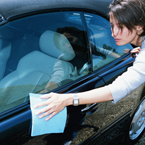 All right, it’s the New Year and time to make your car look like new again. The first step is pretty obvious – clean it. Don’t go through an automated carwash if you want the best results though, as even the most advanced car washes can leave dirty spots on the outside of your car, and some can even damage the paint surface on your car. Read on for more details from DCH Audi of Oxnard. All right, it’s the New Year and time to make your car look like new again. The first step is pretty obvious – clean it. Don’t go through an automated carwash if you want the best results though, as even the most advanced car washes can leave dirty spots on the outside of your car, and some can even damage the paint surface on your car. Read on for more details from DCH Audi of Oxnard.
But first, a description of the paint on your car. It’s made up of several layers of paint, usually a primer, one or more layers of color paint, and a clear coat on top of it all to protect the color paint. The scratches that build up in car paint are often only damage to the clear coat and it is this that you want to repair. Buy a reputable brand of cleaning products – they usually come as a multiple step system, but this is what you essentially want. First item necessary is a good detergent. Don’t use dishwashing liquid or household cleaners, as they can strip layers of wax and clear coat off. Next, you will want to use a good quality wax. This not only protects the clear coat, it fills in the scratches in the clear coat itself. Apply a layer of polish for the final gloss. At all stages use a new, clean cloth – never brushes or sponges. The idea to keeping care of your paint is using the least aggressive way of cleaning it.
Larger scratches and paint damage, such as the result from getting into a scrape with another car or a pole can often be buffed out using a cutting wax. This has tiny abrasive particles in it that strip contamination off the car. Even when it looks like your paint has been badly scratched, it is often the case that whatever the car has contacted has left some if it’s paint on top of your paint, and with a cutting wax it can quite literally be wiped away.
On the inside of your car it’s always a good idea to have a set of good quality floor mats. These not only cover the carpet under the mat and keep dirt off it, but it also means you don’t need to be too aggressive when cleaning the carpet itself. Most cars have synthetic carpets, and if you move the head of a vacuum cleaner over it too fast and with too much pressure, the friction can actually cause enough heat to melt the fibers together and cause a big scratch-like mark.
Dust builds up on the dashboard and center console, and this can be removed by simply running a damp cloth over the surfaces. As long as the cloth is damp and not actually wet the electronics in your car should not be affected. If you want to go further there are plenty of interior cleaners and polishes that can give a glossy effect, but always try the new formula on a piece of trim you don’t normally see so you can gauge whether you want your entire dashboard to look like that.
If your car has leather upholstery, you can go with a high quality leather cleaner. This not only cleans the leather, but like the polish on the outside of the car, it protects the leather from certain damage. Again, be careful in choosing a cleaner as some can make the leather extremely slippery.
Alternately, find a detailing company with a good name and reputation and have them do it all for you. Completely cleaning a car can take a long time, and that’s why there are many professionals around to do the job for you.
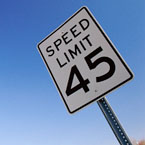 When you sit behind the steering wheel of your car, you control your destiny. You choose where you want to go, when you want to go, and how fast you want to get there. The latter choice carries with it significant risk in the form of traffic tickets, fuel economy, and the urgency of your situation, so take some time to evaluate whether or not you’re at the ideal highway speed for your situation before you let your lead foot have its way. We at DCH Audi of Oxnard have the details. When you sit behind the steering wheel of your car, you control your destiny. You choose where you want to go, when you want to go, and how fast you want to get there. The latter choice carries with it significant risk in the form of traffic tickets, fuel economy, and the urgency of your situation, so take some time to evaluate whether or not you’re at the ideal highway speed for your situation before you let your lead foot have its way. We at DCH Audi of Oxnard have the details.
Ticket-Free Driving
If your primary goal while driving is a ticket-free driving record, you must always drive at or below posted speed limits. If police determine that the speed of your car exceeds the speed limit by as little as 1 mph, they can give you a speeding ticket. You must not drive too slowly, however, because police could ticket you for blocking traffic or failure to maintain designated minimum speeds. Drivers who want to avoid traffic citations must also know local laws for roads that do not have speed limit signs.
Fuel Economy
Most cars have a “sweet spot” for speed that delivers optimum fuel economy. You can often learn about the optimum speeds for your vehicle by visiting the service desk at your dealer. If you cannot find out the speed at which your car delivers the best gas mileage, you can rely on general principles that can help your car get the most out of every gallon of gas. As the speed of your car increases, the resistance it meets from the air also increases. This means that your car must work harder to maintain high speeds than it has to work to maintain low speeds. The U.S. Department of Energy says that the fuel consumption of cars quickly increases at speeds above 50 mph. Surprisingly, cars with the highest fuel-efficiency ratings tend to suffer from bigger drops in gas mileage at high speeds than the drops experienced by cars that have subpar fuel economy ratings. You must drive slowly on the open road if your ideal highway speed is the speed that delivers the most miles per gallon.
Your Car
Your car helps define your ideal highway speed. If you drive a super-high-performance vehicle, your ideal speed could be much higher than if you drive a motor scooter. If you have a need for speed and your car will not deliver, schedule an appointment with your dealer to test drive cars that have ambition under their hoods.
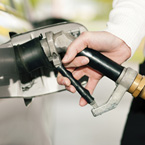 You’re familiar with those perspiration-like beads that form on the outside of a cold beer bottle. That’s moisture condensing out of the atmosphere. The drips can be irritating, but they won’t ruin your day. But when condensation occurs in your car’s fuel tank the impact can be far more serious. Read on to learn how to avoid this mishap from our team at DCH Audi Oxnard. You’re familiar with those perspiration-like beads that form on the outside of a cold beer bottle. That’s moisture condensing out of the atmosphere. The drips can be irritating, but they won’t ruin your day. But when condensation occurs in your car’s fuel tank the impact can be far more serious. Read on to learn how to avoid this mishap from our team at DCH Audi Oxnard.
Gasoline and water don’t mix. Usually the water sinks to the bottom, from where it can get drawn in to the engine. And as water doesn’t burn, your engine is going to cough and splutter. That’s not the end though. Where there’s water, corrosion isn’t far behind, and a fuel tank with water in it can start to rust from the inside, as can the fuel lines.
Throw in freezing temperatures and the problems multiply. When water in fuel lines turns to ice the engine will be starved of gasoline and you won’t be going anywhere until things warm up.
There are three main ways water gets into the fuel tank: it was in the gas station’s storage tanks, it got past a badly fitted gas cap (perhaps when using a car wash or during a rainstorm,) and condensation. The first you can avoid by patronizing gas stations that do a high volume of business. (Rapid turnover keeps the tanks filled with gasoline.) The second is just common sense, and as for avoiding condensation… well here are some suggestions.
Condensation comes from water vapor in the air. The amount of vapor air can hold is closely related to its temperature: warm, moist air holds more than cold, dry air. Armed with this knowledge you’ll see that the keys to reducing condensation are to minimize both the amount of air in the tank and the temperature range it sees.
Keeping the fuel tank full is perhaps the easiest step. The less air inside, the less water vapor there will be to condense out when the temperature drops. As for minimizing temperatures, if a temperature-controlled garage is out of the question, the next best thing is to limit exposure to extremes.
If the car is garaged, avoid leaving the door open on frigid winter days as cold air will quickly chill the air in the tank. And conversely, don’t let the garage get too hot in summertime as a cool night will lead to moisture in the air in the tank condensing out. Insulation in the garage roof space will help, and you could try cracking the door open a touch too.
But what if, despite your best efforts, you think water has found a way into your fuel tank? Bring your car or truck into our dealership. We’ll be happy to determine if water really is the cause of your problems.
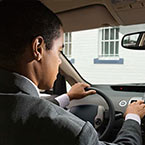 Remote engine starters have been available to drivers for several years now, but have generally been the sort of feature you would find in a luxury car. As with most developments, manufacturers are now starting to include remote starters in more models, making them much more mainstream. You may have read about them in auto reviews, but what are the advantages of having this feature? Our team at DCH Audi Oxnard has the details. Remote engine starters have been available to drivers for several years now, but have generally been the sort of feature you would find in a luxury car. As with most developments, manufacturers are now starting to include remote starters in more models, making them much more mainstream. You may have read about them in auto reviews, but what are the advantages of having this feature? Our team at DCH Audi Oxnard has the details.
Your car may have climate control or air-conditioning, but these systems take some time to moderate the temperature inside the car. On a scorching hot day summer day or a freezing winter night, you might be stuck waiting for the air conditioning or heat to kick in. A remote engine starter takes this problem away for you.
By using the remote engine starter, you can get the car engine running and activate the heating or cooling before you even get inside. That gives you the opportunity to stay indoors in the warmth (or the cool) until the car is ready for you. You need only wait a few minutes, but you can enjoy getting into a perfectly cool or warm car. This can be particularly handy if you have young children and babies, or anyone else that is very sensitive to extremes temperatures.
Starting the car remotely can be safer, too. First off, it gives your engine the chance to properly warm up in the winter. And once the car has warmed up, for example, it’s easier to clear the windows of ice. Brake lights and headlamps will also clear of snow and ice, allowing other cars to see you more easily.
Even simple things can be easier with a remote engine starter. If you have your hands full or you are dealing with children and pets, it isn’t always ideal to have to fumble around with a key in the car door. A remote engine starter will start the engine and unlock the doors for you with the simple touch of a button on your key fob.
Remote engine starters are now becoming more common on new cars. If you don’t already have one, however, you can talk to our dealership about having one fitted. According to where you live, it could make your life much easier and safer.
The survivors of the devastating Typhoon Haiyan in the Philippines are in desperate need of help. DCH Auto Group has responded to this urgent call for aid by making a donation to the International Red Cross.
“Our deepest sympathy goes out to anyone who has been affected by the terrible typhoon,” said George Liang, President of DCH Auto Group. “Our donation to the International Red Cross, helping the victims of this improbable disaster, is an extension of DCH Auto Group’s unyielding embrace of the tenants of corporate citizenship.”
Headquartered in South Amboy, New Jersey, DCH Auto Group owns and operates a wide array of car dealerships – including Acura, Audi, BMW, Chrysler, Dodge, Honda, Jeep, Lexus, Nissan, Scion, and Toyota – located in Southern California, Connecticut, New Jersey and New York. DCH Auto group is a firm believer in good corporate citizenship and working to improve the lives of others in each community DCH does business. Each of DCH Auto Group’s 27 dealerships regularly works with local charities and non-profit groups, including local high school chapters of Students Against Destructive Decisions (SADD).
All of us at DCH Audi Oxnard, along with our fellow DCH Auto Group team members, extend our thoughts and prayers for the people of the Philippines.
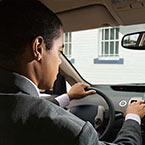 Winter driving technology has come a long way beyond heated seats and power steering wheels. While those improvements are welcome, there are other features that make driving in winter weather safer and less of a hardship. Read on for information regarding six different types of winter driving technology from DCH Audi Oxnard. Winter driving technology has come a long way beyond heated seats and power steering wheels. While those improvements are welcome, there are other features that make driving in winter weather safer and less of a hardship. Read on for information regarding six different types of winter driving technology from DCH Audi Oxnard.
Accident preventive anti-lock brakes
Having anti-lock brakes on your car makes sense during any season, but especially for winter driving. An anti-lock brake system keeps your car under control when applying your brakes. This feature stops your car wheels from locking and helps to prevent skidding by shortening stopping distances. Even if you find yourself in a dangerous situation, your anti-lock brakes will allow you to continue steering your car while bringing it to a halt.
Heated side mirrors for safety
When you drive during extreme winter weather conditions, you need to be able to see not only the road in front of you but also the road behind you. Heated side mirrors are a common safety option on many new vehicles. The heating element clears snow, ice, fog and prevents any more build-up as you continue to drive. Certain models connect the heated side mirror function to the rear window defroster, while many others have a dedicated button for this purpose.
Improved windshield technology
Although heated windshields are rare, more common are heated wipers (also called “de-icers”) and washers. No matter what this feature is called, the point is that the heating element dislodges frozen wipers to allow them to clear the full arc of your vision through the windshield. Most new cars offer this technology as an added option with its own control button, while others connect the feature to work automatically with standard feature defrosters. Windshield washer fluid is always accessible during freezing temperatures when you have heated nozzles/hoses connected to the washer reservoir.
Remote start feature
This feature is especially attractive for people who hate to get into a cold standing car. When your car has the remote start feature, you can turn the car on automatically without getting inside. The best system will also turn on the heat and activate defrosters and heated seat warming. While this feature isn’t environmentally friendly because it wastes fuel, it is a luxury feature that people choose if they drive in extreme winter weather conditions.
Special winter transmissions
Winter transmissions help to prevent your tires from slipping during acceleration whether you have traction control or not. Transmissions with this feature begin to accelerate in second gear (not first) while shifting automatically and promptly through higher gears. Why so quickly? Because when a car uses higher gears, thrust is reduced at the drive wheels.
Vision enhancing adaptive headlights
While standard headlights shine directly ahead in a straightforward way, adoptive headlights react to steering speed and car elevation and adjust automatically to illuminate your road vision ahead. Steer your car left and adaptive headlights will angle to the left as well. These headlights are designed to help not only the driver, but to also other cars driving towards you on the same road. Who hasn’t been blinded by on-coming car headlights? Because adaptive headlights are directed downwards toward the road, headlight glare is reduced.
 A fat man in a sleigh being towed by flying reindeer who lands on your roof, squeezes down the chimney, and drops presents off is unique to Christmas. Christmas is also notable for bringing out the best in people, a unique time of the year when charity flows and kindness prevails. A fat man in a sleigh being towed by flying reindeer who lands on your roof, squeezes down the chimney, and drops presents off is unique to Christmas. Christmas is also notable for bringing out the best in people, a unique time of the year when charity flows and kindness prevails.
Hop in the car and make this special holiday even more unique by taking part in these unique celebrations recommended by our team at DCH Audi Oxnard.
Dickens on the Strand – Galveston, Texas. No author captured the Spirit of Christmas better than Charles Dickens. Come celebrate the ghosts of Christmas past, present, and future by gathering the clan and heading to Galveston for Dickens on the Strand, a three-day street festival that features parades, non-stop entertainment on five stages, strolling carolers, roving musicians, bagpipers, jugglers and a host of other entertainers. You can even meet actual descendants of Charles Dickens and maybe get a visit from ol’ Scrooge himself.
A Christmas Story House & Museum – Cleveland, Ohio. Although the exact date is not known, at some point in recent movie history, Rudolph, Frosty, and the Grinch gave way to Ralphie and his unique family from A Christmas Story as the Christmas Classic that seems to be on TV for seventeen consecutive days in December. So after the movie-watching couch potato-fest, it might be time for a road trip. Ralphie’s house has been restored to its movie splendor and is located just across the street from the Christmas Story museum and gift shop, where you can get that hard-to-shop-for relative an iconic Christmas Story leg lamp.
The Reno Santa Pub Crawl – Reno, Nevada. Unless you want to scar your children for life, you’ll want to leave your kids at home for this one. In fact, you can’t participate unless you’re 21 or older. You’ll want a designated driver for this one. The Reno Santa Pub Crawl takes place in December and involves thousands of Santas and other Christmas costumed characters spreading holiday cheer at the many bars in Reno.
The Inn at Christmas Place – Pigeon Forge, Tennessee. This holiday-themed hotel celebrates Christmas all year. Since you probably only celebrate it in December, December would be a great time to visit this Smoky Mountain resort. The Inn at Christmas Place, a beautiful Bavarian-style hotel, is located right across the street from the Incredible Christmas Place, a name that says it all.
Santa Claus, Indiana. Although Santa Claus’s official mailing address is the North Pole, he has a post office in Santa Claus, Indiana, a town that honors him 365 days a year with Christmas-themed attractions such as Santa’s Candy Castle, the Santa Claus Christmas Store, Santa’s Stables, and more. Rumors have it, he is often spotted there during the summer.
 However experienced a driver is, there will be times when bad weather or other factors will make road conditions more dangerous and they’ll find themselves in a position where their car suffers a loss of traction. This can quickly cause a loss of control and increase their risk of their becoming involved in an accident. In addition to the effects of snow, rain, and ice, oil and other spillages can reduce the grip between a car’s tires and the road surface. It’s important for drivers to understand what to do if their car loses traction. Read on for tips from our team at DCH Audi Oxnard. However experienced a driver is, there will be times when bad weather or other factors will make road conditions more dangerous and they’ll find themselves in a position where their car suffers a loss of traction. This can quickly cause a loss of control and increase their risk of their becoming involved in an accident. In addition to the effects of snow, rain, and ice, oil and other spillages can reduce the grip between a car’s tires and the road surface. It’s important for drivers to understand what to do if their car loses traction. Read on for tips from our team at DCH Audi Oxnard.
Braking
An instinctive reaction of most drivers when their car loses traction and begins to slide out of control is to apply the brakes. However, even when the vehicle has anti-lock brakes, this response is likely to make it harder to regain control of the car. Reducing speed by taking your foot off the accelerator will be far more effective as a means of improving the traction of the car, and it’s less likely to increase the risk of an accident.
Another method of improving traction is to change your gear to a lower setting. By increasing the level of deceleration, this will improve traction by reducing the speed of the car. However, with the increased differentiation between gearing ratios in automatic gearboxes, this approach may not always be advisable. Nonetheless, a gradual reduction of speed, rather than the aggressive reduction resulting from braking, will be more effective in terms of regaining control of your car and improving its level of road traction.
Steering
When a car loses traction, it’s natural for a driver to turn the steering in the opposite direction. Again though, this can easily increase the loss of control of the car. The effective approach to steering if your car loses traction is to turn the steering wheel in the same direction you are already moving.
Awareness and driver behavior
Finally, awareness and adaption of driving behavior are important elements. The impact of bad weather conditions on road traction is likely to be more prevalent in rural and freeway areas, which have less protection from the elements. To reduce risk while travelling on these roads, it’s important for the driver to adapt his or her driving to reflect the conditions – for example, by lowering speed and increasing distance from the car in front.
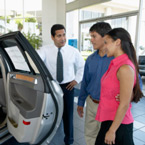 While it’s estimated that six percent of households in the United States lease vehicles, when income rises to $100,000 per year or more, the number rises to 13 percent. There are solid reasons to consider leasing a luxury car that goes beyond costs, mileage and maintenance issues. Allow our team at DCH Audi Oxnard to explain. While it’s estimated that six percent of households in the United States lease vehicles, when income rises to $100,000 per year or more, the number rises to 13 percent. There are solid reasons to consider leasing a luxury car that goes beyond costs, mileage and maintenance issues. Allow our team at DCH Audi Oxnard to explain.
Benefits of new technology
No matter the price range, all new cars come equipped with different levels of technology. Luxury cars often include the latest technological advances not only in safety, but in navigational features and plush creature comforts. What you get is a safer, more comfortable and easier to navigate car whether you drive in the city or urban areas.
Keeps costs low
You get more “bang” for your buck when you lease a luxury vehicle. Depending upon the length of your lease, your monthly payments should be 30 to 60 percent less than if you took out a car loan for the same term on the same car. While most leases don’t require a down payment, there are lease deals that do depending upon the vehicle being promoted. Because you pay only for the depreciation on the vehicle, you won’t pay sales tax on the full value of the car. Usually the tax is spread over the lease period rather than paid up front.
Mileage consideration
When you own your own car and put high mileage on it every year, when it comes time to trade it in or sell, high mileage lowers the selling price. The only time to have to think about mileage when leasing is when you choose a lease term. Avoid mileage fees at the end of your lease by figuring out how many miles you drive per year and then multiplying that number by the number of years you wish to lease the vehicle. Monthly costs are usually lower for longer termed leases.
Reduced maintenance costs
Smart lessees often tie the length of their car lease into the length of the manufacturer’s warranty coverage. If something goes wrong, you won’t be out-of-pocket for any maintenance costs unless you caused the problem.
Lease deals on luxury cars
Typically, you won’t find subsidized deals or rebates on luxury car leases. What you can find are indirect incentives that luxury car dealerships don’t view as wholesale discounting. They believe that if they offer a lease deal with low monthly costs based on discounted prices and high residuals, the lessee benefits even more. However, there are times when luxury car dealers do offer special incentives for very limited periods of time in order to move inventory and make way for newer models.
No used-car headaches
When you lease, you won’t have any more used-car hassles including haggling with potential buyers, worrying about mileage and pricing, or whether or not you should sell it yourself or trade it in. When you lease, you turn back the vehicle and walk away, unless it makes financial sense for you to buy your leased vehicle.
Your decision whether or not to lease a luxury vehicle should be dictated by sound financial planning. Costs, mileage and maintenance considerations should always take precedence over image.
|
 New Year is a time when we vow to make a fresh start. And often that includes taking better care of ourselves. But how about taking better care of your car? Here are five resolutions from DCH Audi of Oxnard to consider:
New Year is a time when we vow to make a fresh start. And often that includes taking better care of ourselves. But how about taking better care of your car? Here are five resolutions from DCH Audi of Oxnard to consider:










